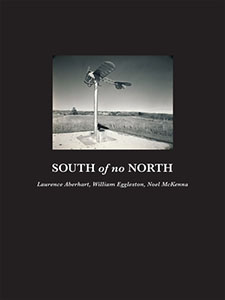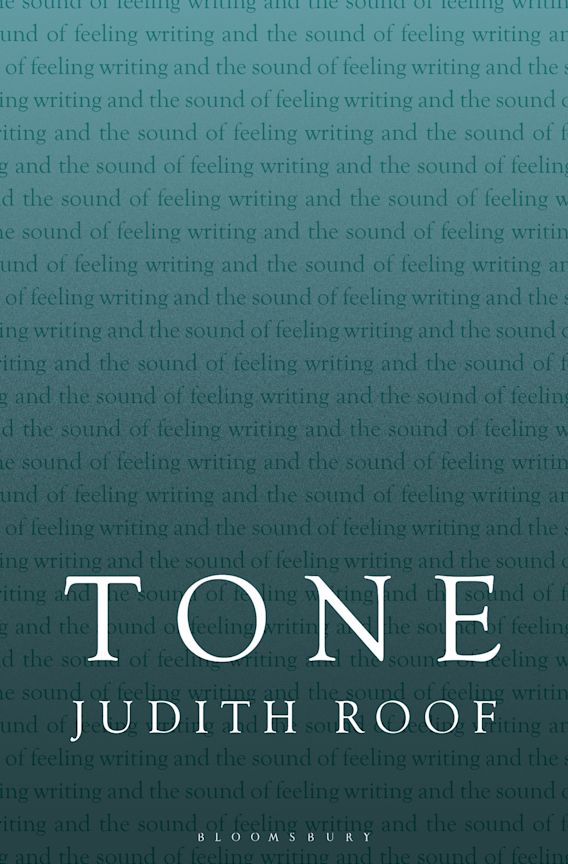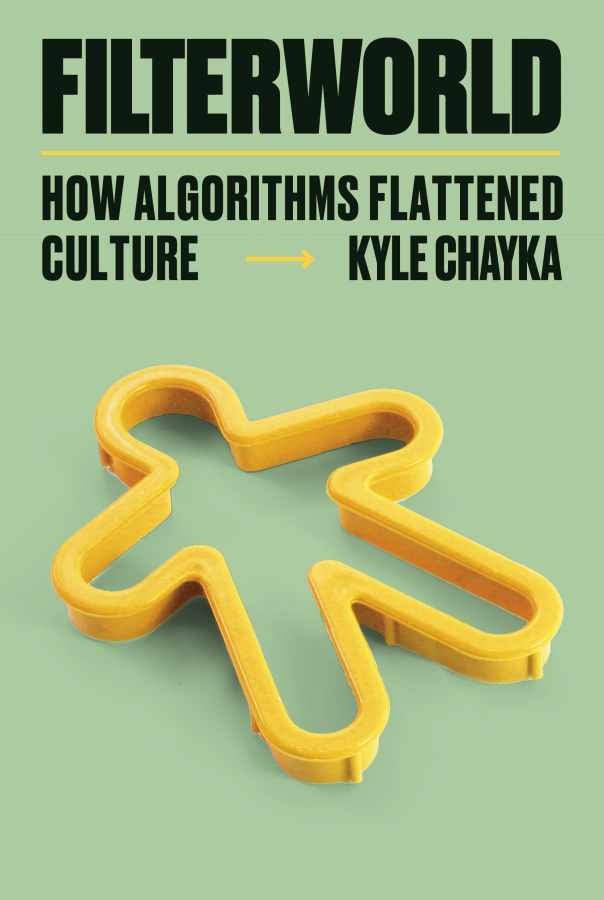There is nothing simple about remembrance. This should be clear enough from the history of Anzac Day. Almost from the start, it was an occasion for quarrels about who conducts ceremonies and how; the place of religion and the Church in commemorations; the appropriateness of work, commerce and sporting events on the day; the varying levels of apathy among the public at large. More recently – and more visibly – in the 1970s and 1980s, a series of protests cast the occasion as a glorification of war, or laid wreaths for the women raped and killed by soldiers. Those protests raised questions about the nature of the memory on display, questions about whether war’s victims were best remembered by rehearsing the military’s own cultures: parading soldiers, playing the Last Post, and so on. They were questions about who was remembered, and who was forgotten. Anzac Day was, and remains, the evocation of a distant and heroic milieu of men, and their exclusive adventures and tragedies. It is still largely focused on ‘our boys’, despite the ceremonial diplomacy on display every year at Gallipoli; the questions have more or less disappeared, along with the movements that incubated them. Anzac Day is now characterised by an unchallenged, solemn acceptance, a vague bundle of motives and feelings that embrace the nationalistic desire for a founding trauma and the sentimental conjuring of the sufferings of our grandfathers.
To say that the questions raised by the pacifist, youth and feminist movements have disappeared is not to say that they have been answered. Within the injunctions to remember, there is still a good deal of forgetting. Indeed, it is tempting to suggest that Gallipoli now serves as a sort of screen memory. It is an event that occurred long enough ago to have settled in meaning, but which is recent enough to let slumber the older memory of colonial violence in the wars between settlers and Indigenous people. John Pilger, in his film Utopia (2013), notably failed to find any trace of those wars in the collections of the Australian War Memorial. The old men who march on Anzac Day, all veterans by now of later wars, genuinely deserve our sympathy, but that sympathy can easily translate into emotional blackmail, one that rules out any critical thought in advance as a hurtful challenge directed at them. The dawn parades, newly popular in the last decade or so, offer instead something of a comfort: the warmth of social bonds, simple times, clear roles and uncomplicated morality.
I say all this partly to get it out of the way at the outset, but also to indicate the spirit in which Laurence Aberhart’s ANZAC is likely to be received, and the purposes to which it might be enlisted. Aberhart is one of New Zealand’s finest photographers. ANZAC brings together 73 photographs of memorials surmounted by statues of soldiers in uniform (‘diggers’) from rural, small town and urban settings across New Zealand, Queensland and New South Wales. Aberhart’s work has included images of memorials in New Zealand and Australia for years, so to collect a series of them in an exhibition and book scheduled for the centenary of the outbreak of the First World War makes perfect sense.
But it remains a risky thing to assemble a collection of photographs of war memorials. It is risky because it seems so obvious, so safe a proposition. The risk is that it fits too neatly, not only into the chronological and commemorative moment, but into what Anzac – the word, the acronym, the day – has become, into what the First World War and Gallipoli have become, into what memorialising has become, into the aims and interests of those who memorialise. That simple thing, a series of photographs, might end up as only another event in the great and deceptively simple gesture of war commemoration.
The danger that ANZAC will seem like just another commemorative album relates, I think, to a tendency that is legible across Aberhart’s considerable oeuvre, one that is not in itself problematic. This is a pull almost in the direction of nostalgia – a preference for folk cultures, throwbacks and remnants; a preference for obsolete things and for places that seem like outliers from the busier and slicker centres of late modernity. It is an interest in the vernacular, as Aberhart’s inclusion in South of No North with US photographer William Eggleston and Australian painter Noel McKenna would have it – or in McKenna’s lovingly disparaging formulation, ‘the excrement of life’.
Aberhart has been drawn, inter alia, to rural churches, masonic halls, graveyards, glass-case museum displays, and suburban housing on the edge of dereliction. These images can be read as nostalgic insofar as we allow them to evoke an attachment to those things, a love for their quirks and the pathos of their disappearance. This pathos is made most explicit – too explicit, on occasion – when there is a seemingly deliberate contrast between the object and its context, as in Petone, 19 January, 1990 (1990), which is reproduced in, among other volumes, the Victoria University Press book Aberhart (2007). The photograph shows three decaying memorial urns on pedestals, dominated by and contrasted with the sheer sleek side of an office building on the image’s right.
A contrast between object and context is often evident in the images collected in ANZAC, too, though it is done with a light touch – a sense, as New Zealand social historian Jock Phillips notes in his introductory essay, of continuing commerce and traffic passing the memorials by without a glance:
Landscapes changed as buildings and roads imposed their ugly presences on the surrounds, leaded letters fell out and were not replaced, rifles were broken or stolen, trees were not trimmed, grass was left unmown.
This view of forgotten objects can be employed for critical purposes. A short series of Aberhart’s digger photographs was included in the recent MOMA exhibition Concrete (2014), which was concerned explicitly with what is remembered and what remains. There was a politics in the focus on ruins as much as monuments, on both the decay and the obstinate remaining of physical items – and on the mismatch between what is left and what is remembered. Objects can remain and yet be forgotten. It is a virtue to look at them again, to find traces of an outside to whatever instrumental and mediated logic seems to govern the world. Concrete also made reference to the centenary of the First World War, but it was driven by a much more explicit critical agenda than ANZAC. The view it encouraged was not one of nostalgic attachment, but of aesthetic removal. It encouraged the critical if rarefied perspective common to contemporary art.
South of No North links Aberhart, McKenna and Eggleston via their interest in the vernacular. They are matched well, as the arrangement of the images repeatedly proves. Moving about the exhibition, or flicking through the pages of the book, we are met again and again with visual correspondences from one image to the next. This is one of the project’s pleasures: McKenna’s Young writer’s room, Dargaville 1978 (2009) and Aberhart’s Interior, white bedroom, Wellington, 29 April 1986 (1986), printed on facing pages in the book, could almost be the same room, only with their elements (bed, door, table) distributed differently. A similar equivalence is drawn between Eggleston’s famous tricycle in Untitled (Memphis) (1970) – shot from a low angle so that it looms over both viewer and the background of houses as a giant’s toy – and Aberhart’s view of a plane mounted on a pylon in The Fisher Monoplane, Gladstone, Wairarapa, 15 April 2004 (2004). The latter’s kitsch monumentalism is also found in McKenna’s paintings of the large, iconic sculptures of fruit found throughout small-town Australia and New Zealand – and both Aberhart and McKenna have images of giant penguins. Aberhart’s photographs of Anzac memorials could easily fit here, alongside other images of graves and monuments, as small town shrines that combine local sentiment with neglect.
South of No North is a carefully arranged sequence, a curatorial conceit that, on the one hand, subsumes to its own purposes the images themselves – some of which are very well known, such as Eggleston’s Untitled (Greenwood, Mississippi) (1973), also known as Red Ceiling – and on the other hand, allows us a fresh view of them. The result is a dialectic of movement and arrest. Photographs and paintings whose virtue is their contemplative stasis are made into frames of a story, but as we follow that story we are repeatedly brought to a halt.
What kind of story is it? It would, of course, be strange to read a novelistic arc into the sequence of images. It is easier to understand it as a kind of freedom of association, often poetic or musical rather than narrative, working with visual rhyme, repetition and structure. There is, however, something like an initial or ideal setting: the American South. It is Eggleston country: a country thoroughly marked by colour, in all senses of the word – race, of course, as well as ‘local colour’ – so it is somehow suited to his notorious and initially (within the art world) somewhat shocking use of colour film and dye-transfer prints. Red Ceiling itself is only possible because of the peculiar quality of colour in the ceiling it depicts, something that is photographically reproducible only with difficulty. In Eggleston, colour has something to do with place, with immersion in the vibrancy of local detail.
The South, then, is a world capital of colour and of the vernacular, wherever it might be. Its rich local traditions no doubt partly stem from of its history of resistance to interference from outside, from the Federation and from the North. Obviously, with its roots in slavery, this resistance is not something we can endorse. But this does not restrain our fascinated view of it. The title South of No North is borrowed from the Charles Bukowski book of the same name: a collection of stories of the oppressed and absurd. But the phrase is also a declaration of independence, an erasing of the South’s more powerful Other and an assertion of its cultural autonomy.
The temptation to be avoided – even though the project might suggest it through its choice of artists – is to identify the American South with the Antipodean South (or, worse, the Global South). Such identifications are against the point. They override crucial structural and historical differences between those places. I think, instead, that the ‘South’ of the title begins to name something that might be found anywhere, even in the midst of the North (any North) – in its suburbs and small towns, its fringes and pockets of structural unemployment and self-containment. ‘South’ becomes a name for the vernacular per se, with its strong accents, its colours, even arguably its own tendencies towards exclusion and forgetting. It names those traditions formed out of a belligerent localism, which combine homegrown inventiveness with a readiness – against, for example, an imposed and sanctimonious environmentalism – to embrace mass-produced goods and pop culture.
Aberhart has visited the American South, and the photos from those visits provide many of the book’s images. McKenna never has – except, as he claims in the book’s text, through Eggleston’s photographs. However, we can also see something of the ‘South’, as I have described it above, in Aberhart’s New Zealand and Australian images, and in McKenna’s paintings. This South is a thing of the imagination. It is an atmosphere that somehow informs and overlays those other places, those other visions of social distance and exclusion, those other embattled folk traditions that wither or thrive against the odds.
This small constellation of terms – colour, place, vernacular, South – posits equivalences across the boundaries of medium and formal difference. Aberhart might in this context be read as a photographer of colour, if not quite a colour photographer. McKenna’s paintings reach towards places where the painter has never been, towards rooms and buildings and overblown forms (giant fruit!) elsewhere and everywhere. At the same time, the expression and interpretation always implicit in the fact of brushwork – the fact that the painter does this, repeatedly choosing where and how shade and colour are placed – borrows a hint of photography’s mechanical, documentary recording of places and particulars. This is the most obvious reading of the project, and it either downplays or troubles formal differences and differences of medium.
Another way of seeing it, of course, would be as a demonstration of the opposite: a juxtaposition of media emphasising not equivalence but difference. The shift from a photographed bedroom interior to a painted bedroom interior raises the issue of the difference between painted and photographed scenes (in McKenna’s bedroom scene, there is the impossible geometry, the absence of vanishing points). It could be a collision of the thing itself – or photography’s documenting of it – with painting’s subjective calculus of impression, expression and sign. That would leave us with a more austere project than we have here, if it were allowed to play itself out to its fullest. It would leave behind its places and their vernaculars, in favour of a theorised consideration of the modes by which we apprehend the world.
The picture we have so far is of an interest across both of these books in objects that have popular meaning and value – meaning and value, we might suspect, that is discovered against the odds, against the dominant trend towards abstraction and finance. They are compromised forms determined by a mix of culture industry brainwashing, popular creativity and resistance, taking in cheap junk from WalMart and the misguided civic boosterism that erects monuments to the local agricultural staple. They acquire a shine or a clarity under the gaze of these photographs and paintings. They are allowed to be themselves. This is one of the promises of Eggleston’s idea of the ‘democratic camera’: a Rancièrian aesthetic notion par excellence, in which everything is admitted within the image, irrespective of quality and provenance. The camera documents what people do, what they create, appropriate and love despite everything, as well as what they discard. It is, at best, a means of documenting the strange desires at the heart of people’s lives.
We cannot simply be enthusiastic about such objects of popular significance. I started this review with a cautionary tale about Anzac commemoration and the uses to which it can be put, and the same kind of warning applies to other vernacular forms. Images of place and region can become tokens of nationality; they can also be made to serve corporate interests. The vernacular is also, alongside any popular flourishing or resistance, an object for consumption or a recruitment device. It is never only a thing of its people – or not for long. Indeed, art might itself be counted among the interests ready to profit from it. As Julian Bell suggested recently in the London Review of Books, the vernacular is now common in art institutions wishing to reclaim some relevance for the non-elite. Folk traditions, as Bell points out, generally remain ‘theirs’ rather than ‘ours’, something that art cannot quite claim for itself. The appeal to them, then, involves awkward positioning for the institution, and for the artist – condescending ironic distance or a possibly mis-firing shot at solidarity? In short, the vernacular – of which Anzac traditions are a part – is a minefield: presenting vernacular images as art requires an alertness not only to what other agendas those images might line up with, but also to what positions and attitudes are already there in the artistic making or recording of them.
We have already noticed that Aberhart’s photographs focus on structures and objects in their senescence – on ‘things in the process of disappearing’ as Glenn Barkley has it in South of No North. The most interesting point in Phillips’s essay in ANZAC is an extension of this theme. He argues that a memorial serves as a ‘surrogate tomb’ for soldiers whose bodies lie on the other side of the world. Memorials acted as focal points for communities united in their loss, places for a ceremonial process of mourning. In them – that is, in the stone figures on display in Aberhart’s photos – the war dead lived on for a time: long enough for grieving families and friends to take their leave. The memorials thus participated in collective acts, bringing communities together in their grief.
There is a whiff of nostalgia in Phillips’s essay, to accompany the nostalgia we can read into the photos themselves – if we choose to. But there is also a suggestion that the memorials were neglected after a time because they were successful. The grief was worked through; communities eventually moved on to other ways of memorialising and to other concerns. And it was worked through perhaps at the expense of community itself. The successful community was founded on the ultimately successful mourning process, and eventually that process was no longer needed. This means that the attempt to call up the trauma again, to re-knit communities around its work or its symbols, involves a strange and surely misguided attempt to undo the work of mourning, to symbolically refresh a distant loss and claim it as our own.
This also means that when we look at the images of memorials, we are looking at something whose popular significance, whose adoption by a place and a community as one of its very own ‘vernacular’ objects, is a thing of the past. This is not to say that the families of today’s war dead – there are a few – will not find personal significance in them. But the wider function of memorials is now different, a thing more of the state and national sentiment than of the community. They have become, in a memorable phrase of Fredric Jameson’s, ‘statue[s] with blind eyeballs’ – a formula for the postmodern appropriation or imitation of dead styles as pastiche, as reference, as feel, without content or urgency.
To note all of this is to begin to pay attention, not to the cultural expression embodied in the memorials, but to the function they once fulfilled. It is to see them as a kind of machine, an obsolete technology. It suggests the affinity of Aberhart’s project with that of the photographers he perhaps most strongly resembles, though not much tends to be made of the similarity: Bernd and Hilla Becher. The Bechers’ images of disused industrial machinery, largely around the Ruhr Valley, but also elsewhere in Europe and in the United States, share some of their visual and material language with Aberhart’s photographs. Both use black and white silver gelatin prints and views en face; there is a general absence of people; captions are minimal, naming only the location and time of exposure. Aberhart departs from these principles more often than the Bechers, and some of their techniques are absent in his work – notably, their flat, pre-dawn lighting and the consequent absence of shadow. But the similarities link him more clearly to the Bechers than, say, to their later, flashier Dusseldorf School pupils and descendants, such as Thomas Struth or Andreas Gursky, who make use of colour and the large format exhibition prints that have become affordable since the Bechers began their work, as well as (in Gursky’s case) the digital manipulation of images. Despite his hints of lyricism or compositional dynamism, Aberhart tends more towards the Bechers’ ‘anti-aesthetic’ or ‘topographic’ studies rather than towards any more recent tendency to re-aestheticise the photographic image as a thing of spectacular, painterly beauty.
Relating Aberhart to the Bechers means paying attention to their interest in photographic series – their repeated returns to types of subject matter. Again, this is more pronounced in the Bechers, who famously collected their work into volumes according to a typology of industrial structures: blast furnaces, grain elevators, cooling towers. The effect of this was both to foreground the content – a type of building or machine – and to de-emphasise it. The multiplication of similar images emphasises, instead, the grammar according to which they are juxtaposed and compared, the interplay between constancy and variation. This de-emphasis, the self-reflective arrangement and presentation of images in grids and series, made the Bechers heroes of the conceptual art movement, but they have retained a strong interest in their objects of study. They often include short essays in their books on how the technology functioned and have argued, especially in the case of the blast furnaces, that the objects embody their function sculpturally in the shape of their external skin.
Aberhart’s series have not had the conceptualist or typological consistency of the Bechers. They have not usually appeared in the form of series, as such. The strongest exception, until now, has been the book and exhibition Domestic Architecture (2005), which featured images of suburban housing, mostly in New Zealand and Australia, but also in Japan, Vanuatu and France (there is also a prior and complementary volume, The Interior, in the form of a small, matt printed catalogue). These houses, one of which is included in South of No North, seem as illegible as the Bechers’ blast furnaces are legible. They are remarkable for their closure, for the front they put up against the world: for their closed doors, blank walls and dark interiors. No clue is given to what lives within them. This is, I think, part of what the images reveal: the role a house plays in the enclosure of a life – one, we might guess, that is as derelict as the blast furnace, as predicated on a fading industrial society of machines and machine-like commuter suburbs.
I would love to see ANZAC as another typology, and not only because I would love to see Aberhart’s work more generally reinterpreted as typological in nature. The fact that only one type of memorial is included in the book – those topped with a digger statue – strengthens the case. It is a handsome, well-produced volume, something that makes a big difference for our appreciation of the photographs, though I wonder whether the resulting coffee-table feel works against the typological reading. Certainly, the timing of the release does, implicating the book in commemorative sentiment. But what would it mean for ANZAC to be informed by a typological project? Its repetitive study of a certain kind of object could suggest an almost scientific remove, a view that does not allow itself to be carried away by enthusiasm or pathos, or indeed by comment of any nature. It is a way to enhance the tendency in photographic images towards dispassionate, silent observation. This ‘topographical’ objectivity is what I think is most interesting about Aberhart’s work. He does this very well – though he does other things too, and well.
If ANZAC’s photographs can be read as a ‘scientific’ study, South of No North almost inevitably seems like a road trip. In the South, Eggleston is no visitor – even though one of his books is entitled William Eggleston’s Guide (2002) – but it is not only the focus on place that suggests a kind of tourism. The road trip is evoked in Noel McKenna’s text, which begins with a reminiscence of travelling with Aberhart. It is also hinted it in McKenna’s biographical note: ‘A perambulist and bicycle rider to this day, he believes it is the best way to discover the true spirit of a place’. There is a romanticism and a blokeishness to all this – not least in McKenna’s comment about Aberhart’s driving (too fast, it turns out) – and a trace of the flâneur. Aberhart can certainly be enlisted for such a trip, as South of No North proves. In fact, Victoria University Press’s earlier and larger collection of his work, Aberhart, has something of the same effect, leading us on a lyrical walk through his oeuvre rather than presenting a series of object studies, and some of his other, smaller volumes have focused on place, sometimes as the result of a particular visit – to the Taranaki district of New Zealand, for example, or to Macau.
Either extreme of the contrast here between series and narrative, between the topographic view and the road-trip, has its virtues. There is much to be said for the attempt to allow local cultures and colours to shine out from the image: to let them, and make them, dance their dance for us. The dispassionate view of a type in the form of a series, on the other hand, is perhaps one of the aesthetic techniques best suited to the idea of recording, preserving and remembering a past without claiming it. It is a view that presents its images without sentiment. It would be an excellent antidote to the slow marches of the Anzac industry. The question is whether, in 2014, such a dispassionate view of the Anzac memorial is possible.
Works Cited
Laurence Aberhart, Aberhart (Victoria University Press, 2007)
⎯ Domestic Architecture (McNamara Gallery, Wanganui, 2005)
⎯ Espaco sereno: fotografias sobre Macau = Ghostwriting: Photographs of Macau (Museu de Arte de Macau, 2001)
⎯ The Interior (McNamara Gallery, Wanganui, 2002)
⎯ Recent Taranaki Photographs (Govett Brewster Art Gallery, 2012)
Geraldine Kirrihi Barlow, Concrete (Monash University Museum of Art, 2014)
Bernd and Hilla Becher, Blast Furnaces (MIT Press, 1990)
Julian Bell, ‘At Tate Britain,’ London Review of Books (3 July 2014) http://www.lrb.co.uk/v36/n13/julian-bell/at-tate-britain
William Eggleston, Democratic Camera, photographs and video 1961-2008 (Whitney Museum of American Art, 2008)
⎯ William Eggleston’s Guide (Museum of Modern Art, 2002)








